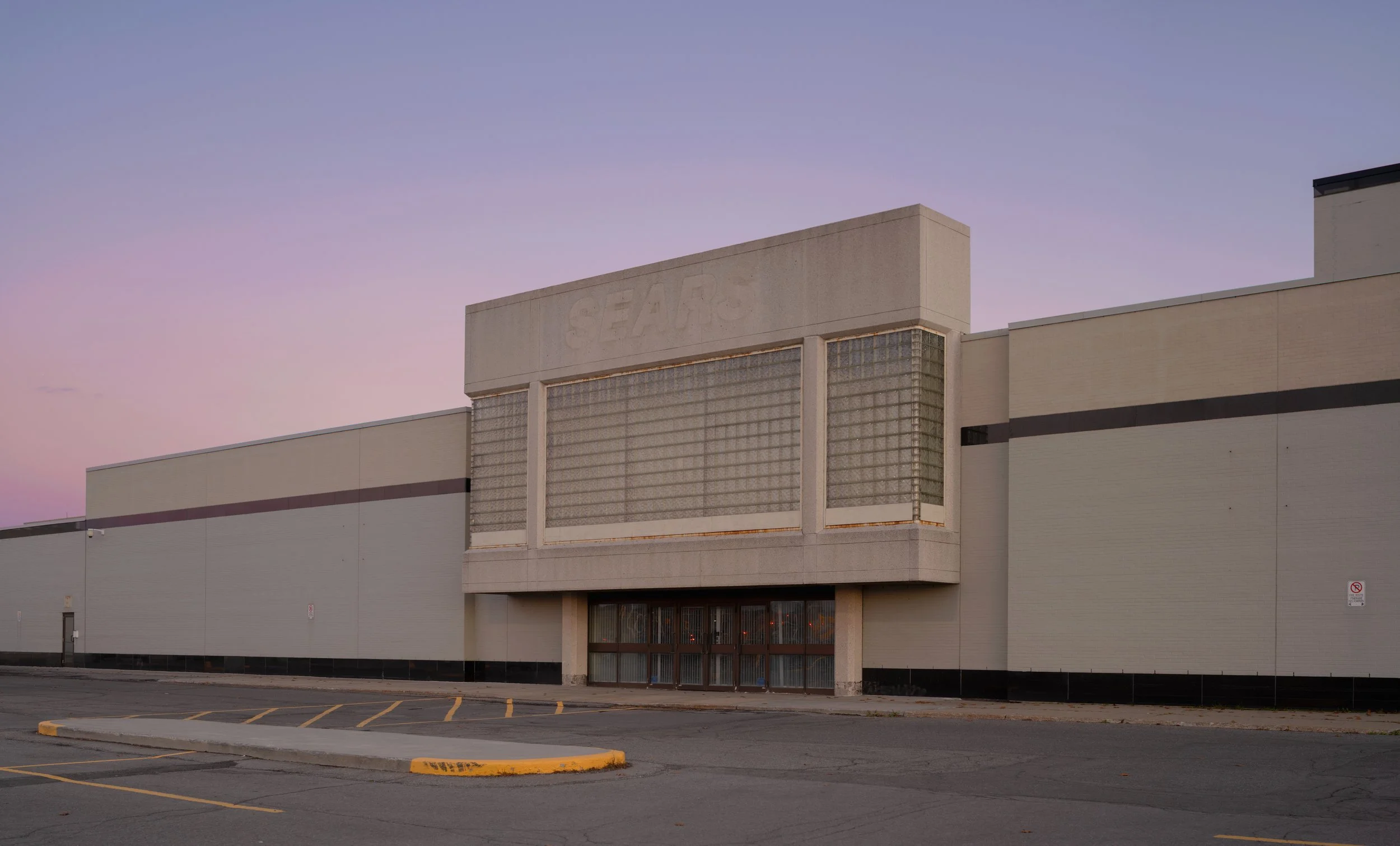“F$EARS”
Closed down Sears department store in Ottawa.
Photography has a very special relationship with the real world. Photographs are traces of memories, freezing the present and becoming records of the past the very moment they are created. They are rooted in and represent reality, yet they are something else, evoking a myriad of feelings and provoking different responses and interpretations as time goes by. A photograph of a once commonplace and ordinary subject turns into an object evoking feelings of nostalgia and longing for something gone. Photography reflects reality and enables us to reflect on ourselves and discover or rediscover something about ourselves on a societal or personal level. I am using photography to learn about the reality I am surrounded by. By recording what's in front of me, I am becoming familiar with my subject matter. I hope that the images I make can also be included in the vast repository of collective human memory. I like to think of myself as an archivist of the present, though I know that the moment I make the image, it is an image of something that is already in the past, an image of a memory. Nostalgia is stimulated by our memories. Photographs are perfect nostalgia-inducing devices; however, my aim is not to use them as such, quite the contrary. I am using colour photography, contemporary image-making techniques, and a 'neutral' aesthetic to avoid tinting my images with an artificial patina. I am avoiding decontextualising my subject matter and finding ordinary subjects interesting enough in their own form to not have the need for obscuring them with stylistic devices. I want my photographs and my materials and technique to be timestamps in themselves too.
In 'F$EARS,' I choose my subject matter not for its nostalgic qualities but to have a record of something that was disappearing due to changing socio-economic circumstances. Sears and other vast department stores and shopping malls in general occupied an important place in the lives and memories of previous generations. They influenced the economy and shaped the topography of Canadian cities. Their closure indicates a significant change in societal habits and changes in the Canadian urban fabric. Using photography to record these changes is my primary interest. As a newcomer to Canada, I don't have memories attached to what was once considered one of the economic icons of post-war Canada, although I appreciate the nostalgic responses many of the viewers have to this image. Every change takes us into unfamiliar territory and makes us anxious about our future. My title is a contemplation on the socio-economic uncertainties brought upon many people affected by the closure of 'Sears' and a contemplation of what this event might signify in the near future for retail and cities as a whole.
Process
'F$EARS' is a photographic composite consisting of nine separate digital images captured and exposed in quick succession, then combined to create the final image. Nine frames were exposed separately in short intervals and later combined digitally to create a final composite photograph. This technique was originally developed during the film era. For creating 'F$EARS,' I used a Cambo Actus view camera, which works on the same principles as a traditional technical camera but instead of large or medium format film or traditional digital back, I am using a digital mirrorless camera.
Images used for the composite.
My lenses are from medium format Pentax 645 system and were designed about 40 years ago to be used with film. They create image circle large enough for me to utilise the rear shift movements available in the Cambo Actus to capture separate images needed for the creation of wider-angle images without optical distortions.
Photographed on 31st Oct 2020. Printed by Błażej Marczak. Edition: 30 + 2AP.


